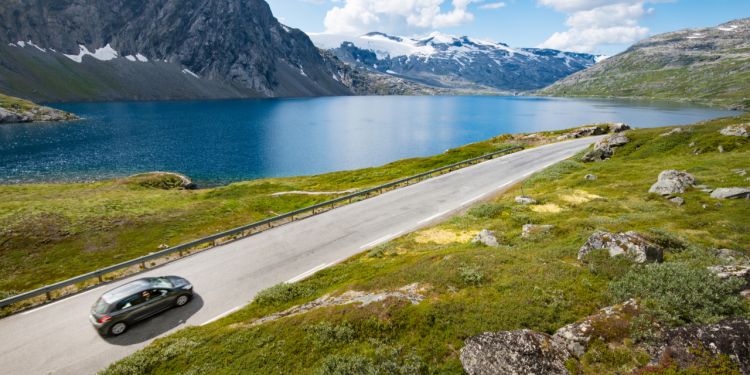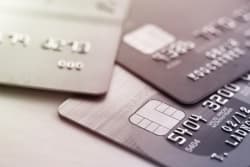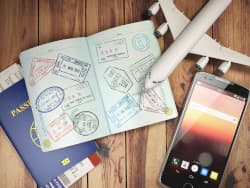
Welcome to Norway, a country with the highest number of electric vehicles per capita, including many Teslas. In the cities, these cars are abundant and continue to enjoy certain privileges. However, local policies have changed: toll discounts and free charging are no longer as widely available as they once were.
These perks now depend on the discretion of local municipalities. If you're planning to drive through Norway's expansive countryside, ensure your vehicle is adequately equipped to handle extreme weather conditions, especially in winter when winter tires are required.
Driving license in Norway
EU and EEA citizens
Under the EEA agreements, driving licenses issued by EU/EEA countries are valid in Norway without the need for exchange, unless they expire. In that case, you can swap your license for a Norwegian one without undergoing any additional tests.
Good to know:
Once exchanged for a Norwegian license, your foreign license is returned to your home country. The Norwegian license will then be valid across all EU/EEA countries.
Non-EU/EEA citizens
If your license was issued outside the EU/EEA, you can drive in Norway for up to three months, after which period procedures vary depending on your country of origin:
- Swiss and Japanese licenses: Your license can be exchanged for a Norwegian one without further tests, provided it is within 12 months of your arrival in Norway.
- Licenses from the United States, Canada, Australia, and similar countries: Provided you pass a practical driving test, your license can be exchanged within 12 months of arrival.
- Licenses from other countries: A theoretical and a practical test are required to acquire a Norwegian license.
Typically, you'll need to provide the following:
- Your original foreign driving license must be valid at the time of the exchange request.
- A valid proof of identity: acceptable documents include a foreign passport (excluding emergency passports) or a national ID card from EU/EEA countries, Switzerland, or Ukraine.
- Proof of residence in Norway: demonstrating that you legally reside in Norway.
- A certified translation of your driving license: official Norwegian or English translations are required if the license is not written in English, French, or German.
- A recent photograph meeting standards for Norwegian official documents.
- Payment for any applicable fees, which vary depending on the type of license and services required.
For the most up-to-date information on the license exchange process, visit the Norwegian Public Roads Administration (Statens vegvesen) website or contact a local traffic station (trafikkstasjon).
Acquiring a driving license in Norway
To obtain a type B driving license (passenger car) in Norway, you must first complete a basic road safety course, typically undertaken by Norwegians after secondary school. This 17-hour course covers essential topics such as traffic rules, pedestrian interactions, night driving, and accident response. Upon completing this course, you will receive a learner's permit, allowing you to begin driving lessons.
The basic training emphasizes your responsibilities as a driver and introduces eco-driving principles. You can choose between an automatic or manual transmission vehicle, depending on the type of test you plan to take. Training can be conducted through a driving school or with a non-professional instructor, tailored to your experience and needs.
Once basic training is complete, you will advance to mastering traffic skills, followed by a mandatory 13-hour road course. After completing these steps, you can schedule the theoretical exam, which, once passed, qualifies you to take the practical driving test of about 55 to 60 minutes on a predetermined route.
Good to know:
The theoretical and practical tests require advance booking (a change from previous procedures).
The cost of obtaining a driving license in Norway typically ranges from 20,000 to 30,000 Norwegian kroner (NOK), or approximately 1,800 to 2,700 euros. This estimate covers the costs of mandatory courses, driving lessons, theoretical and practical tests, as well as specific modules like night driving and ice driving.
Note that the number of lessons you need depends on your previous experience and skills, so the total cost may vary based on your progress and the rates of local driving schools.
Contact several driving schools directly in Norway to compare offers and receive more tailored quotes tailored to your personal situation.
Theoretical test
An appointment to take the theoretical test must be scheduled, mandatorily in advance, at the Driver and Vehicle Licensing Office (trafikkstasjon), either online or through a booking service. A valid identification is a must-have on the day of the test.
Practical test
Likewise, you must make an appointment for the practical test, either on your own or through your driving school, which can book your spot upon authorization to act on your behalf. On the test day, it is also required to present proof of identity and ensure that all mandatory training has been completed and recorded in the system.
Other important driving facts for Norway
Direction of driving
In Norway, as in most European countries, you drive on the right and overtake on the left. Drivers must remain particularly vigilant on mountain roads and in tunnels, both of which are prevalent across the country.
Speed limits
Speed limits in Norway are as follows:
- 50 km/h in urban areas (unless otherwise indicated);
- 80 km/h on national and county roads;
- 90 or 100 km/h on certain highways, although these are few in Norway.
Good to know:
Signs clearly indicate speed limits and speed cameras are widespread.
Seatbelt use
Wearing seatbelts is mandatory for all passengers, both in the front and rear seats. Fines for not complying are high.
Driving under the influence
Norway has a strict minimum tolerance policy:
- The blood alcohol concentration (BAC) limit is 0.2 g/l (one of the lowest in Europe).
- Penalties for violations include hefty fines, license revocation, and even imprisonment for repeat offenders or in cases involving accidents.
Mandatory equipment and safety
In winter (from November 1 to the first Monday after Easter), vehicles must be fitted with winter tires or chains if conditions demand.
Low-beam headlights must remain on at all times, both day and night.
Drivers must carry a warning triangle and a reflective vest in their vehicles.
Specific precautions
Norwegian roads can be narrow, winding, and potentially slippery in winter. Caution is essential, particularly when crossing mountainous regions or fjord areas.
Be alert for wildlife, such as moose and deer that may cross roads, especially at dusk.
Tolls and ferries
Tolls are common in Norway and are often automated through the AutoPASS system. Additionally, Norwegian roads include many ferry routes, which are integrated into the main itineraries. It is advisable to check schedules and rates in advance.
Phone use while driving
Using a phone without a hands-free kit is strictly prohibited and subject to a fine.
Road networks and specific features
Norwegian roads are generally well-maintained but can be narrow in rural areas.
Norway features some of the longest tunnels in the world, with advanced safety systems.
We do our best to provide accurate and up to date information. However, if you have noticed any inaccuracies in this article, please let us know in the comments section below.











